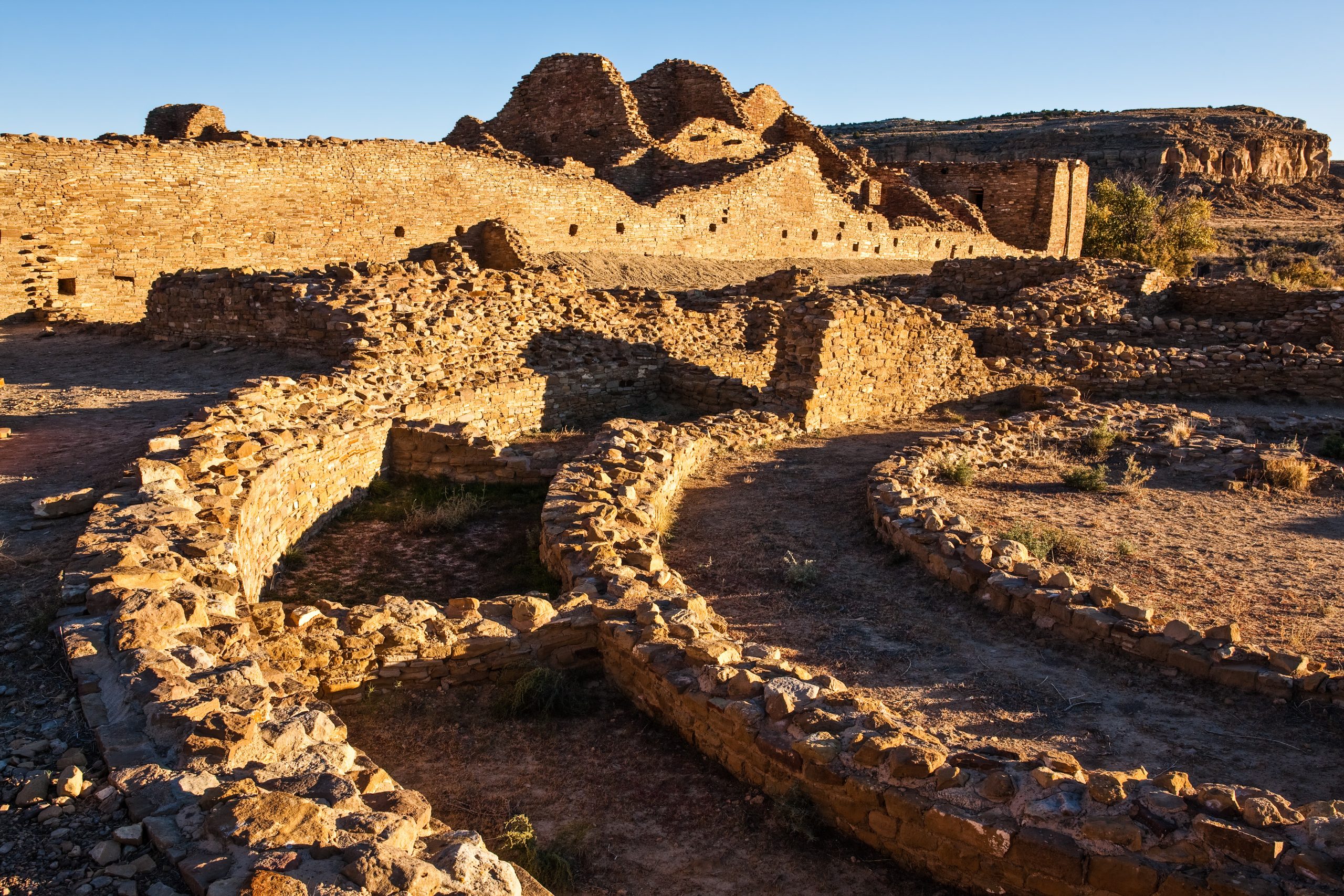
The Biden administration is banning new oil and gas drilling for the next 20 years at New Mexico’s Chaco Culture National Historical Park, a UNESCO World Heritage Site since 1987.
The order withdraws public lands within 10 miles of the park from from new oil and gas leasing and mining claims for the next 20 years, part of an effort to protect 4,700 known archaeological sites. In total, it covers an area of 336,404 acres.
The historic region was home to the Chaco culture, an Indigenous civilization that flourished from the year 850 to about 1250. Many contemporary tribes across the Southwest trace their roots to the Chacoan people, who built an urban ceremonial center with monumental buildings of stacked stones—some designed to align with the sun or moon based on the season—and an elaborate system of roads across New Mexico, Arizona, Utah, and Colorado.
“Efforts to protect the Chaco landscape have been ongoing for decades, as Tribal communities have raised concerns about the impacts that new development would have on areas of deep cultural connection,” U.S. Secretary of the Interior Deb Haaland said in a statement. “Today marks an important step in fulfilling President Biden’s commitments to Indian Country by protecting Chaco Canyon, a sacred place that holds deep meaning for the Indigenous peoples whose ancestors have called this place home since time immemorial.”
View of the ancient settlement of Anasazi, Chaco Ruins Culture National Park, Chetro Ketl, 11th century, Chaco Canyon, New Mexico, United States of America. Anasazi civilization. Photo by DeAgostini/Getty Images.
At the White House Tribal Nations Summit in 2021, Biden announced plans to draw up protections for the park after a two-year review and environmental analysis in consultation with Pueblo and Tribal Nations.
The Bureau of Land Management has not issued a permit for new drilling in the affected region in about a decade. The organization considered a smaller, five-mile withdrawal, as well as not taking any specific action, but determined that the 10-mile radius provided the greatest protection for vulnerable historic sites. (A five-mile withdrawal would have left some 2,800 archaeological sites vulnerable to drilling.)
The bureau published a proposal for the 10-mile withdrawal in the Federal Register in 2022, and had a 120-day public comment period. The newly enacted order does not affect private-, state-, or tribal-owned lands, or public lands under existing leases for drilling.
The ruins of Chetro Ketl house built by Ancient Puebloan People is seen at Chaco Culture National Historical Park. Photo by Mladen Antonov/AFP via Getty Images.
Predictably, the New Mexico Oil and Gas Association opposed the order, with a spokesperson telling the New York Times that the “arbitrary” restrictions would limit economic opportunities. The Navajo Nation also objected.
“The Navajo Nation attempted to compromise by proposing a five-mile buffer as opposed to the 10-mile,” Navajo Nation council speaker Crystalyne Curley said in a statement, as reported by ABC News. “The Biden administration has undermined the position of the Navajo Nation with today’s action and impacted the livelihood of thousands of Navajo allotment owners and their families.”
The Greater Chaco Coalition, which includes members of the Diné and Pueblo tribes, on the other hand, are calling for the end to existing drilling in the Greater Chaco region.
Pueblo Bonito, the ruin of an ancient Ancestral Puebloan Native American Great House in Chaco Culture National Historical Park. Chaco Culture is a UNESCO World Heritage Site. Photo by Jon G. Fuller/VWPics/Universal Images Group via Getty Images.
“The Greater Chaco Landscape has endured generations of legacy oil and gas extraction,” Julia Bernal, executive director of Pueblo Action Alliance, said in a statement. “Phas[ing] out new and existing oil and gas development is a necessary next step. The Greater Chaco coalition will continue to advocate for the end of the fossil fuel economy, and the remediation and clean up of historic oil and gas infrastructure, and the implementation of environmental justice principles for future land management practices that center frontline community voices.”
More than 90 percent of the area around the park—which had 41,000 visitors in 2022—has either been promised to the gas industry or is already being used for gas and oil extraction, according to the Western Environmental Law Center.
By the bureau’s own estimates, according to Colorado paper the Journal, the new ban will have minimal impact on the area, with a .5 percent decrease in natural gas production and 2.5 percent for oil production.